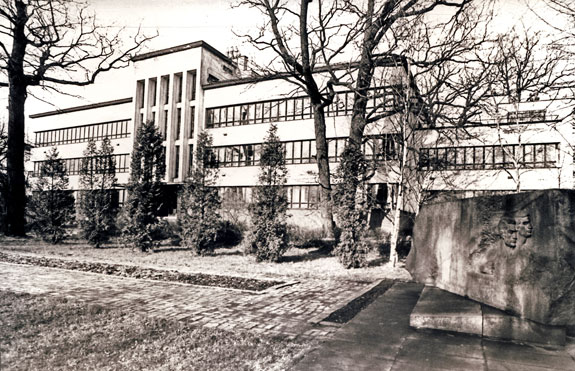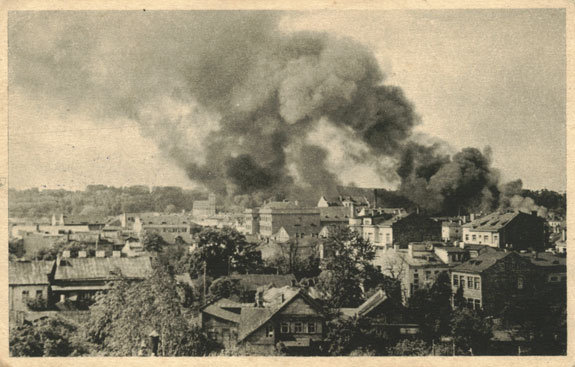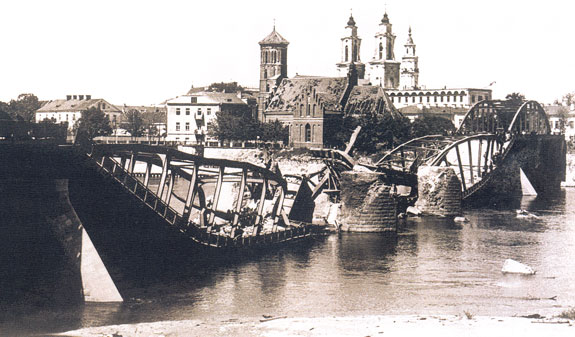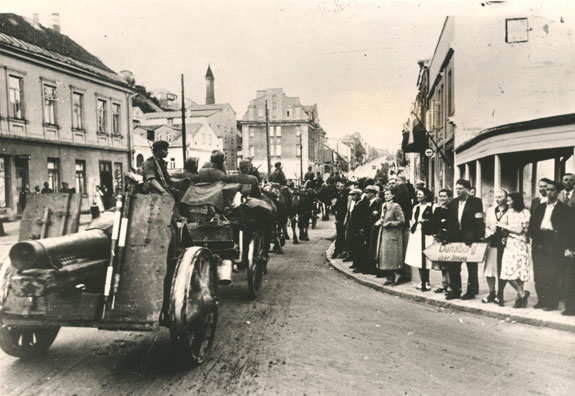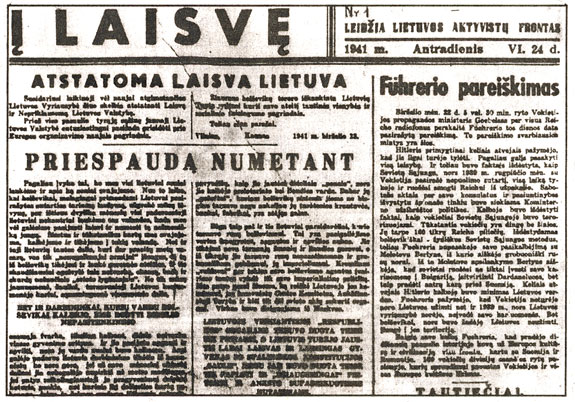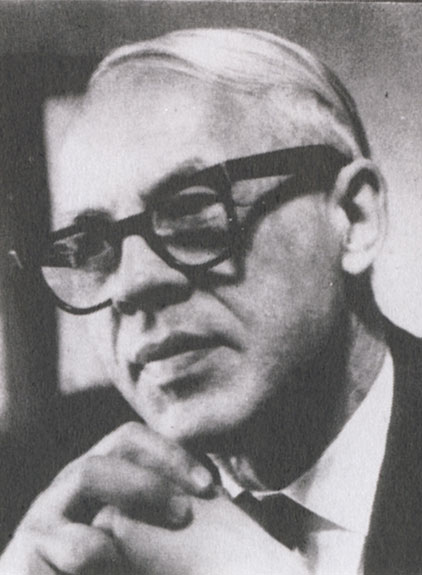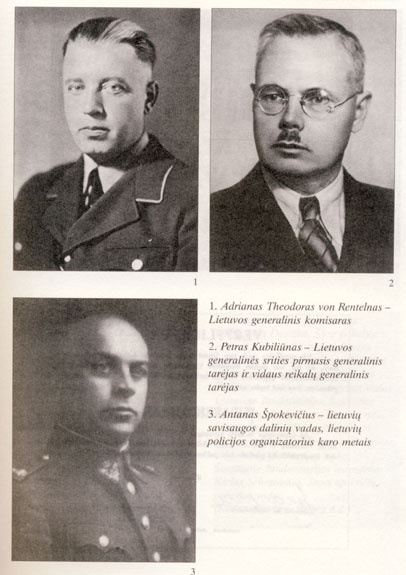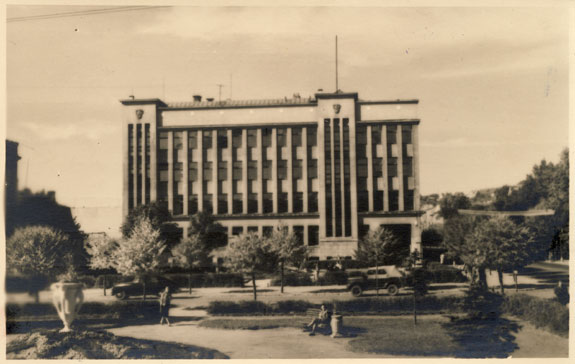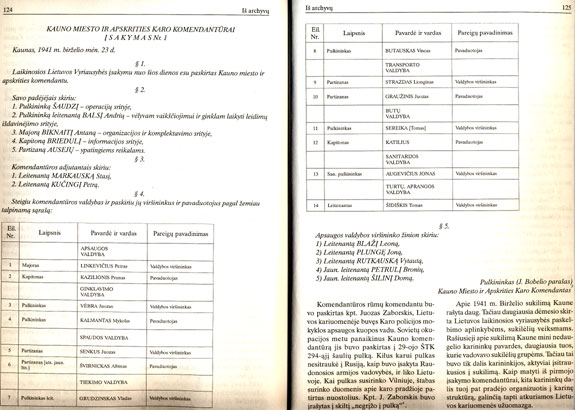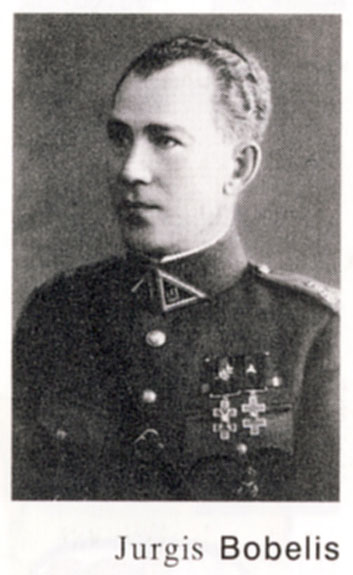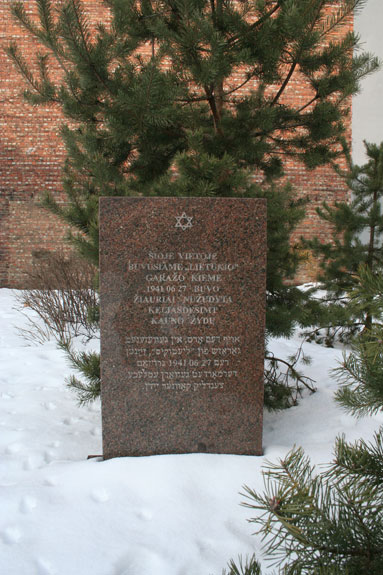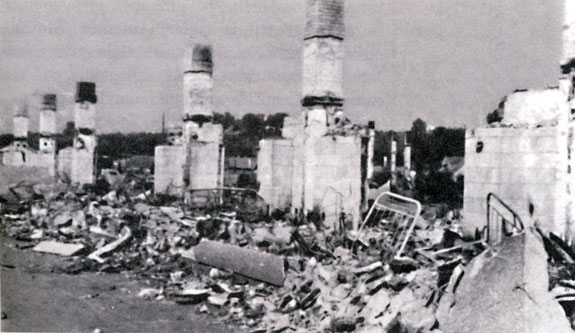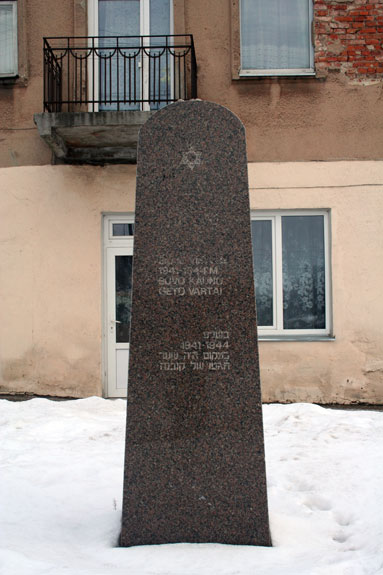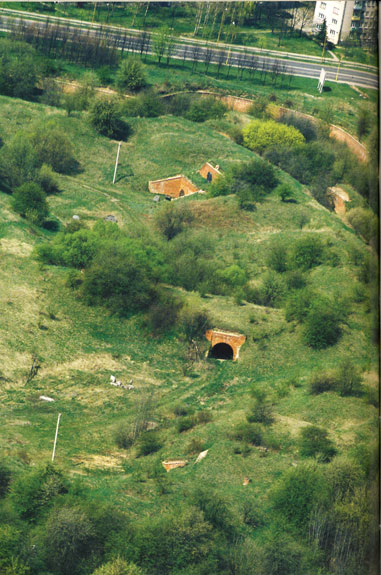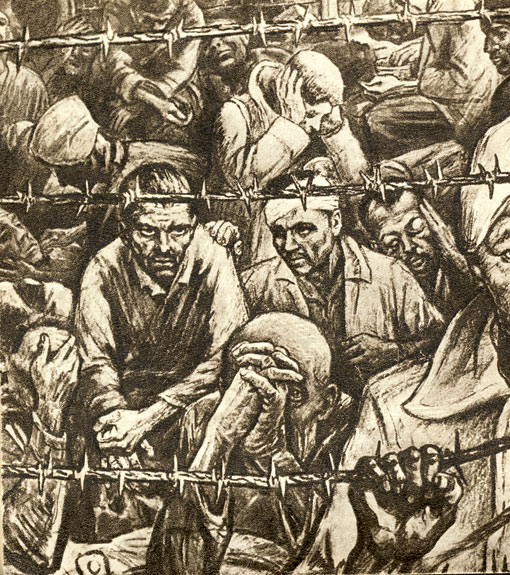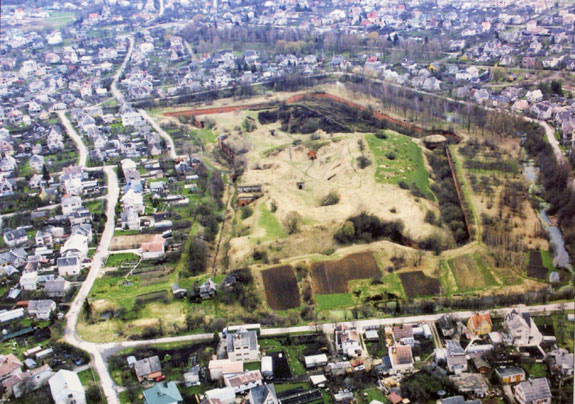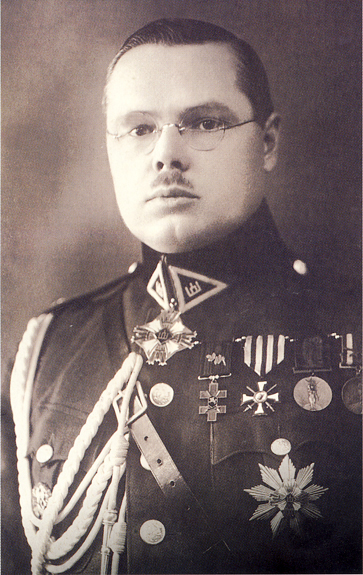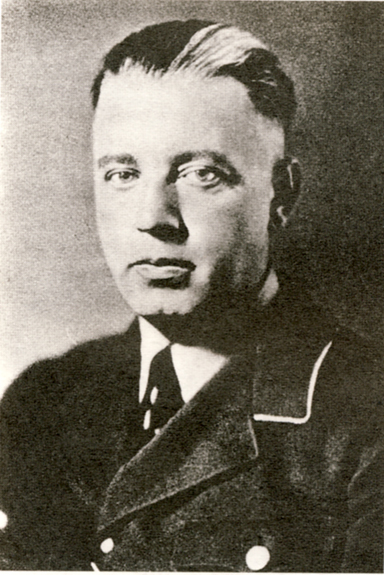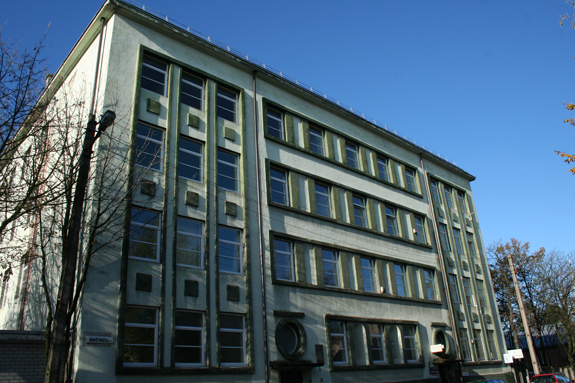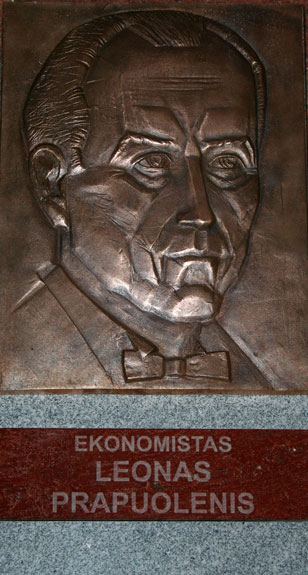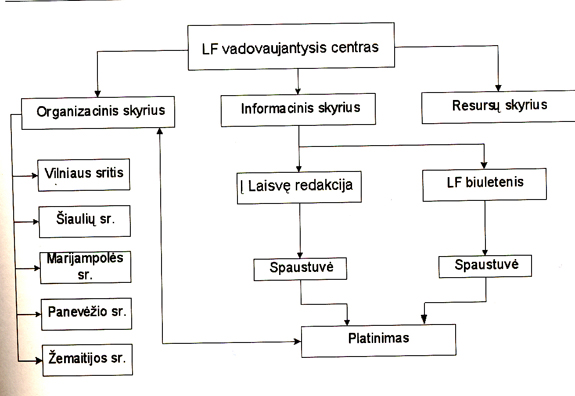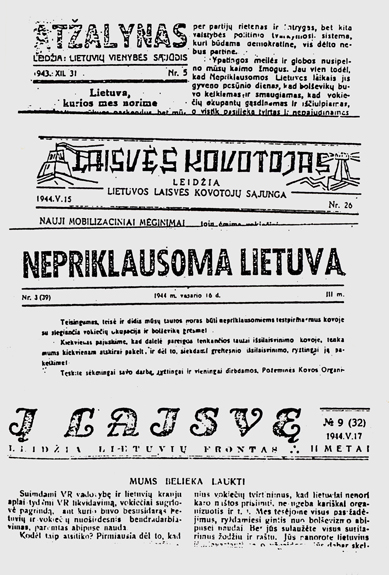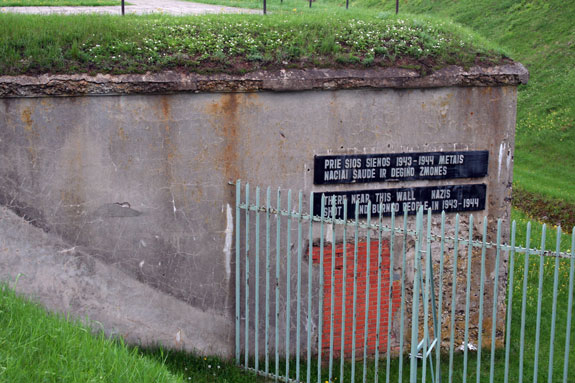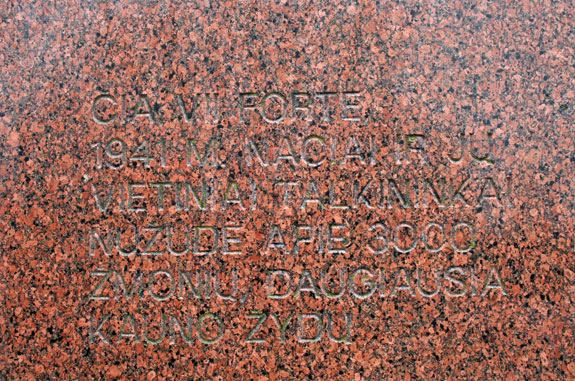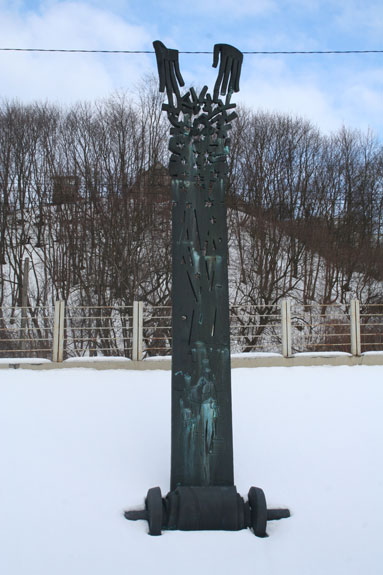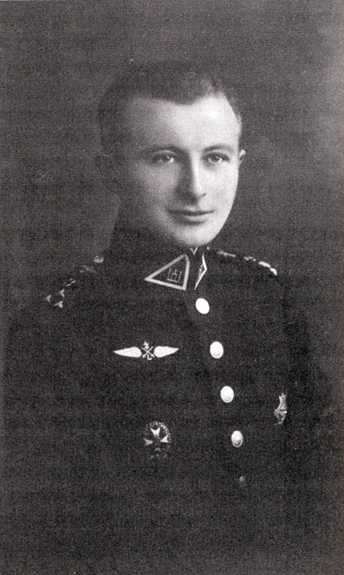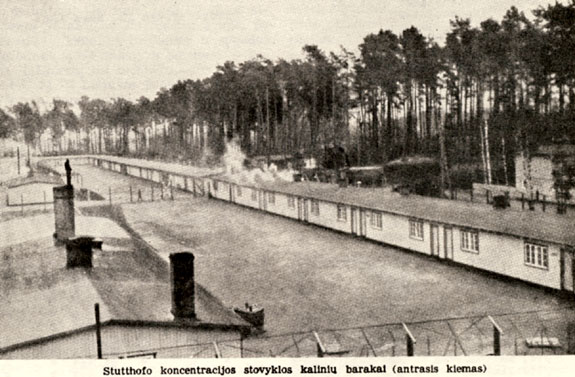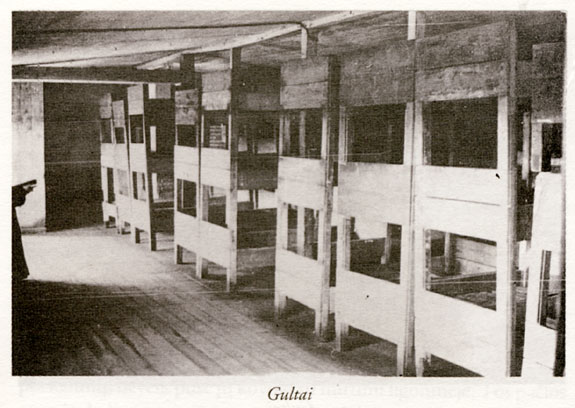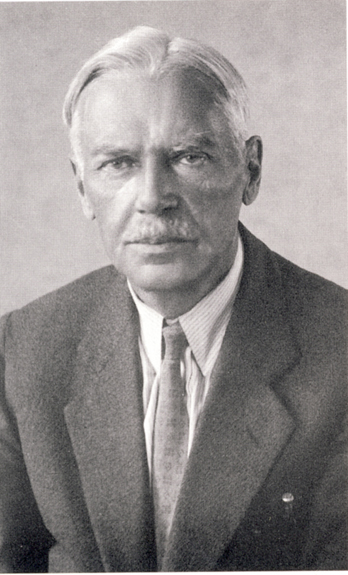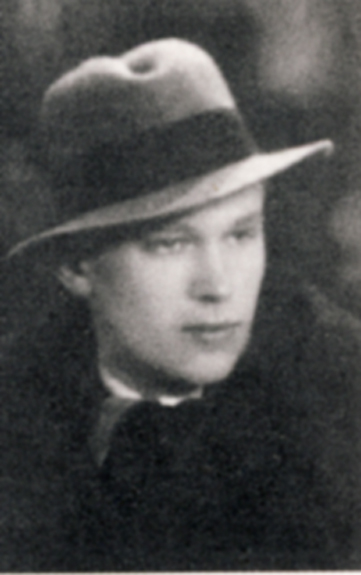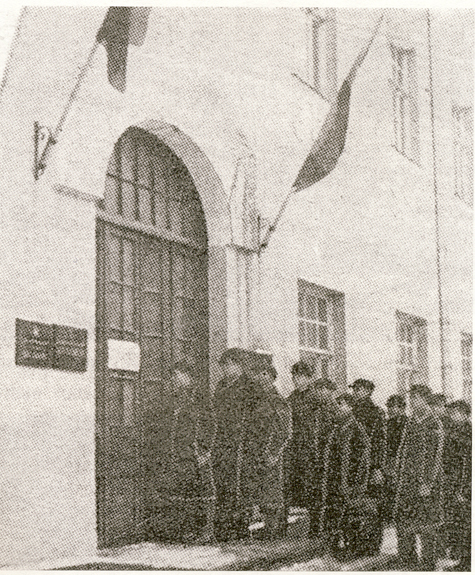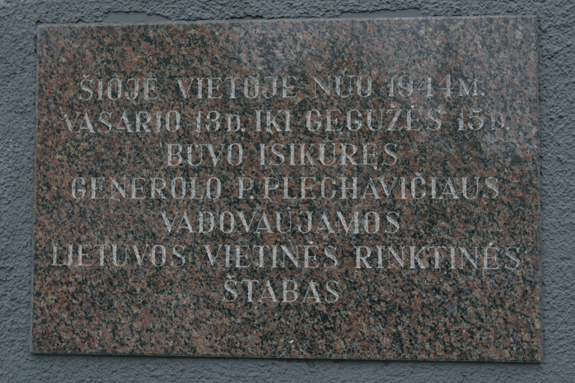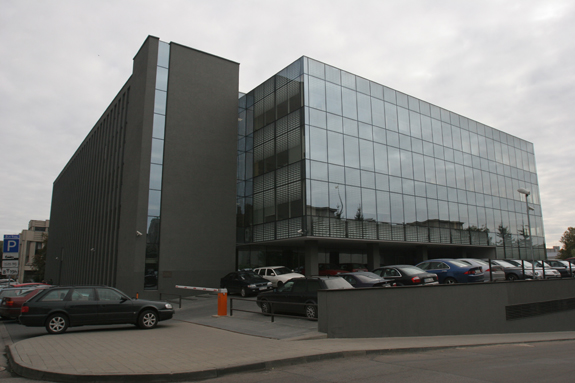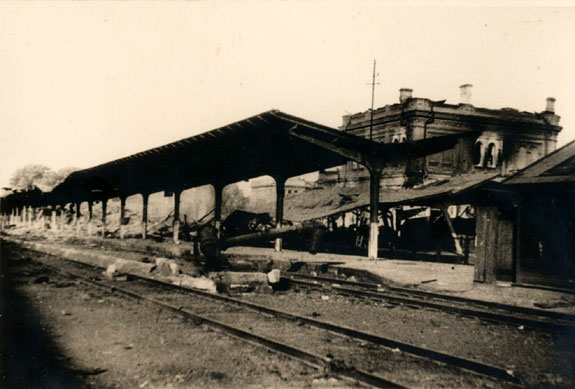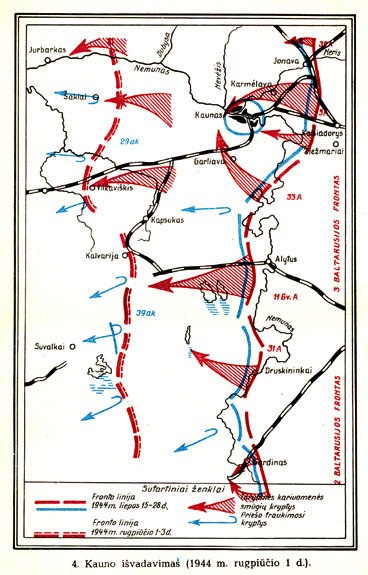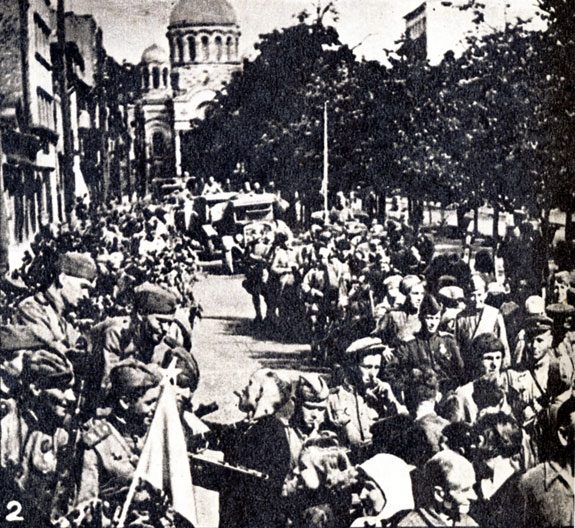22–25.06.1941 uprising took place in Kaunas.
In the morning of the 22nd of June, Aleksotas Airport was bombarded by German aviation. Kaunas local security staff, which governed the uprising in Kaunas and maintained public order after Germans entered the city, was spontaneously formed. In the evening of 22nd of June, the rebels took action: they captured radio stations in Daukanto St. and Žaliakalnis and the post office. 26 youth teams spontaneously formed in the city. They fought with withdrawing units of the Red Army. Intense fighting took place in Šančiai. Soviet collaborationists left the city en masse. 120 prisoners were sent from the prison, 80 of whom were shot during the next few days in Belarus. On the 25th of June, German army and security units entered liberated Kaunas. 3400 partisans participated in the uprising (in Kaunas and out of town), 155 of whom were killed.
1. Antisovietinis 1941 m. lietuvių sukilimas / Afimija Stepanianienė. – Kaunas, 1996. – 77 p. : iliustr.
2. Birželio sukilimas ir laikinoji vyriausybė. – Iliustr. // Lietuva, 1940–1990 : okupuotos Lietuvos istorija. – Vilnius, 2005. – P. 167–173.
3. Karo ugnyje // Lietuva dviejų okupacijų replėse, 1940–1944 / Albinas Gražiūnas. – Vilnius, 1996. – P. 50–110.
4. Mes kovojome ir žuvome, kad Lietuva būtų laisva / Lietuvos 1941 m. birželio 22–28 dienų sukilėlių sąjunga ; [sudarytojai Algimantas Biliūnas, Alfonsas Žaldokas]. – Kaunas, 2005. – 78, [1] p. : iliustr.
5. Sovietinis genocidas ir jo padariniai / Arvydas Anušauskas // Lietuvos gyventojų genocidas. – Vilnius, 1999. – T.1, p. 28.
6. Sukilimas. 1941 birželio 22–25 d. : dokumentai, prisiminimai / sudarė ir parengė Antanas Martinionis, 1994. – 168 p. : iliustr. ; Sukilimas. 1941 birželio 22–28 d. : dokumentai, prisiminimai / sudarė ir parengė Antanas Martinionis, 1995. – 228 p. : iliustr.
7. Tautos teisė sukilti : medžiaga ir dokumentai 1941 m. Birželio sukilimui įvertinti / Lietuvos 1941 metų birželio 23–28 dienų sukilėlių sąjunga ; [sudarė Jonas Algirdas Antanaitis, Alfonsas Žaldokas]. – Kaunas, 2001. – 158, [2] p. : faks.
8. 1941 m. Birželio sukilimas : dokumentų rinkinys / sudarė Valentinas Brandišauskas. – Vilnius, 2000. – 378, [2] p. – Santr. angl. – Bibliogr. įžangos išnašose. – Pavardžių ir vietovardžių r-klės.
9. 1941 metų Birželio sukilimas // Siekiai atkurti Lietuvos valstybingumą (1940 06–1941 09) / Valentinas Brandišauskas. – Vilnius, 1996. – P. 66–91.
10. Uprising against Soviet Occupational Forces on June 22–25, 1941. – Iliustr. // Lithuania against Soviet and Nazi aggression / Adolfas Damušis. – [Brooklyn (N.Y.)], 1998. – P. 78–102.
23–24.06.1941 institutions of the restored state were established in Kaunas.
On the 23rd of June the declaration of the restoration of Lithuanian independence was pronounced and the list of provisional government members of Lithuania was made. The next day, government members gathered for the first session. The autonomy of Kaunas was restored with one of their first certificates of the government. At the same time, Lithuanian Activist Front (LAF) was launched in Kaunas. It helped to take over the control of the uprising in Lithuania.
1. Antrosios nepriklausomybės deklaracijos 65-osios metinės / Edmundas Simanaitis // XXI amžius. – 2006, birželio 23, p. 11.
2. Apie Lietuvos ginkluotą pasipriešinimą agresoriams / Kazimieras Dobkevičius. – Iliustr. // XXI amžius. – 2004, spalio 20, p. 15.
3. Centrinių ir vietinių valdžios organų sudarymas ir veikla // Siekiai atkurti Lietuvos valstybingumą (1940 06–1941 09) / Valentinas Brandišauskas. – Vilnius, 1996. – P. 92–124.
4. Laikinoji vyriausybė ir vietinės valdžios sudarymas bei veikla. – Iliustr. // Lietuva, 1940–1990 : okupuotos Lietuvos istorija. – Vilnius, 2005. – P. 173–177.
5. Lietuvos laikinoji vyriausybė : posėdžių protokolai, 1941 m. birželio 24– rugpjūčio 4 d. / [parengė Arvydas Anušauskas]. – Vilnius, 2001. – 183, [1] p., [8] faks. lap.
6. Laikinoji vyriausybė. – Portr. // Antisovietinis 1941 m. lietuvių sukilimas / Afimija Stepanianienė. – Kaunas, 1996. – P. 56–72.
7. Laikinoji vyriausybė ir jos veikla // Lietuva dviejų okupacijų replėse, 1940–1944 / Albinas Gražiūnas. – Vilnius, 1996. – P. 111–195.
8. Lietuvių policija Antrajame pasauliniame kare / Petras Stankeras. – Vilnius, 2008. – P. 162.
9.. 1941 m. Lietuvos laikinosios vyriausybės atsiradimo aplinkybės / doc. dr. Sigitas Jegelevičius. – Iliustr. // Voruta. – 2004, birželio 12, p. 5 ; birželio 26, p. 2; liepos 10, p. 2; liepos 31, p. 3.
28.06.1941 disarmament, dissolution and transformation of rebel units into Lithuanian police, National Labor Protection Battalion, started.
The battalion took over patrolling in the city and participated in Jewish massacre.
1. Holokaustas Lietuvoje. Rasinis genocidas: Lietuvos žydų žudynės Vilniuje ir Kaune. – Iliustr. // Lietuva. 1940–1990 : okupuotos Lietuvos istorija. – Vilnius, 2005. – P. 201–208.
2. Kauno karo komendantūros Tautinio darbo batalionas 1941 m. // Genocidas ir rezistencija / Stasys Knezys. – Vilnius, 2000. – [T] 1 (7), p. 122–168.
3. Lietuvių policija nacių okupacijos metais 1941–1944 (Organizacinė struktūra ir personalas) : Daktaro disertacijos santrauka / Petras Stankeras. – Vilnius, 2000. – 27 p.
4. Lietuvių policijos batalionai ir Holokaustas (1941–1943) / Arūnas Bubnys. – Portr. – Bibliogr. išnašose. – Gretut. tekstas angl. // Lietuvos žydų tragedija. – Vilnius, 2001. – P. 39–52.
5. Lietuvių policijos batalionai ir kiti junginiai // Lietuvių policija 1941–1944 metais / Petras Stankeras. – Vilnius, 1998. – P. 126–131.
6. Lietuvių policijos 1 (13)-asis batalionas ir žydų žudynės 1941 m. // Genocidas ir rezistencija / Arūnas Bubnys. – Vilnius, 2006. – [T] 2 (20), p. 31–52.
7. Lietuvos batalionai vokietmetyje / Balys Raugas. – Iliustr., lent. // Terorizuojama ir naikinama Lietuva 1938–1991 / Jonas Petras Kedys. – [Klaipėda], 1994. – P. 352–356.
8. Penktasis lietuvių policijos batalionas (1941–1944) / Arūnas Bubnys. – Bibliogr. išnašose. – Santr. angl. // Genocidas ir rezistencija. – Vilnius, 2001. – [T] 1 (9), p. 44–50.
1941, at the end of June, after German soldiers occupied Kaunas, persecution of Jews and mass murder (pogroms) started.
On 27.06.1941, tens of Jews were killed in the former garage yard of “Lietūkis”. This event gained huge resonance and became the symbol of the Holocaust in Lithuania. On 27.01.2014 for memory of 125 Jews killed on 30.08.1941 stela was unveiled in Petrašiūnai.
1. „Lietūkio“ garažas / Arvydas Anušauskas, Gražina Sviderskytė. – Iliustr., planas. – Nuotraukos iš filmavimo aikštelės // XX amžiaus slaptieji archyvai. – Vilnius, 2008. – P. 58–113.
2. Fizinis Lietuvos gyventojų naikinimas // Vokiečių okupuota Lietuva (1941–1944) / Arūnas Bubnys. – Vilnius, 1998. – P. 69–312.
3. Holokaustas Lietuvos provincijoje 1941 m. : žydų žudynės Kauno apskrityje / Arūnas Bubnys.– Santr. angl. – Bibliogr. išnašose// Genocidas ir rezistencija. – 2002, [t.] 2 (12), p. 81–103.
4. Lietuvos žydų žudynių byla = The case of the massacre of the Lithuanian Jews : dokumentų ir straipsnių rinkinys. – Vilnius, [2001]. – 823, [1] p., [8] iliustr. lap. : žml. – Bibliogr., p. 805–806, ir išnašose. – Asmenvardžių r-klė: p. 810–823.
5. Nacių okupacija: Holokaustas Lietuvoje. Rasinis genocidas. Lietuvos žydų žudynės Vilniuje ir Kaune // Lietuva, 1940–1990 : okupuotos Lietuvos istorija. – 2-asis patais. ir papild. leid. – Vilnius, 2007. – P. 206–228.
6. Prisimintos kraupios žudynės Petrašiūnuose / Virginija Skučaitė. – Iliustr. // Kauno diena. – 2014, saus. 28, p. 2.
7. The Holocaust in Lithuania between 1941 and 1944 / by Arūnas Bubnys ; [translator Lina Krasnovaitė] ; general editor Dalia Kuodytė. – Vilnius, 2005. – 51, [1] p. : iliustr., faks., portr. ; 20 cm. – Virš. aut. nenurodytas.
8. Tragedija įamžinta už Savivaldybės lėšas / Arūnas Andriuškevičius // Kauno diena. – 2002, spalio 28, p. 4.
10. Žudynės „Lietūkio“ garaže // Žydai, lietuviai ir holokaustas / Alfonsas Eidintas. – Vilnius, 2002. – P. 170–182.
10.07.–15.08.1941 the Kaunas Ghetto was established in Vilijampolė.
In 1943, it was reorganized into SS concentration camp; it was liquidated in the middle of July, 1944.
1. Fizinis Lietuvos gyventojų naikinimas // Vokiečių okupuota Lietuva (1941–1944) / Arūnas Bubnys. – Vilnius, 1998. – P. 69–312.
2. Kauno getas (1941–1944) / Arūnas Bubnys. – Santr. angl. – Bibliogr. išnašose // Genocidas ir rezistencija. – 2004, [t.] 2 (16), p. 7–40.
3. Kauno getas, 1941–1944 / Arūnas Bubnys. – Vilnius : Lietuvos gyventojų genocido ir rezistencijos tyrimo centras, 2014. – 144 p.: iliustr., faks., portr.
4. Kauno getas: diena po dienos / Avraham Tory. – Vilnius, 2000. – XXXIX,[II], 555, [2] p., [16] iliustr. lap. : iliustr., žml. – Bibliogr. įž. str. išnašose. – R-klė / sudarė Irena Stankevičienė, p. 543–555.
5. Lietuvos žydų persekiojimas ir masinės žudynės 1941 m. vasarą ir rudenį = The persecution and mass murder of Lithuanian Jews during summer and fall of 1941: šaltiniai ir analizė / Christoph Dieckmann, Saulius Sužiedėlis. – Vilnius, 2006. – 279, [1] p., [8] iliustr. lap. : faks. – Gretut. tekstas liet., angl. – Bibliogr.: p. 84–89.
6. Lietuvos žydų žudynių byla = The case of the massacre of the Lithuanian Jews : dokumentų ir straipsnių rinkinys. – Vilnius, 2001. – 823, [1] p., [8] iliustr. lap. : žml. – Bibliogr., p. 805–806, ir išnašose. – Asmenvardžių r-klė: p. 810–823.
7. Nacių okupacija: Holokaustas Lietuvoje. Rasinis genocidas. Lietuvos žydų žudynės Vilniuje ir Kaune // Lietuva, 1940–1990 : okupuotos Lietuvos istorija. – 2-asis patais. ir papild. leid. – Vilnius, 2007. – P. 206–228.
8. The Holocaust in Lithuania between 1941 and 1944 / by Arūnas Bubnys ; [translator Lina Krasnovaitė] ; general editor Dalia Kuodytė. – Vilnius, 2005. – 51, [1] p. : iliustr., faks., portr. ; 20 cm. – Virš. aut. nenurodytas.
10. Vokiečių okupacijos metais Lietuvoje veikusių getų, koncentracijos stovyklų ar kitokio tipo prievartinių stovyklų sąrašas. – Prieiga per internetą. URL: http://www3.lrs.lt/pls/inter3/dokpaieska.showdoc_l?p_id=217863. – Žiūrėta 2010 m. vasario 5 d.
11. Kaunas Ghetto, 1941–1944 / Arūnas Bubnys ; [translator UAB “Magistrai”]. – Vilnius : Genocide and Resistance Research Centre of Lithuania, 2014 (Vilnius : Petro ofsetas). – 157, [2] p. : iliustr., faks., portr. – ISBN 978-609-8037-41-8
26.07-05.08.1941 autonomous structures of the Lithuanian government were liquidated.
On 26.07.1941 Lithuanian self-government institutions became subordinate to the German city administration. On 30.07.1941 Germans started to control the police of Lithuania. Subsequently, Lithuanian armed forces, located in Kaunas, within two weeks were transformed into battalions of self-defense. On 04.08.1941 the Provisional Government was evicted from its premises. The next day, the government stopped its work.
1. Lietuvių savivalda ir vokiečių okupacinė valdžia: tarp kolaboravimo ir rezistencijos / Sigitas Jegelevičius // Genocidas ir rezistencija. – 2000, [t.] 1 (7), p. 113–121.
2. Lietuvių viešoji policija ir policijos batalionai (1941–1944) / Arūnas Bubnys. – Santr. angl. – Bibliogr. išnašose // Genocidas ir rezistencija. – 1998, [t.] 1 (3), p. 81–104.
3. Vokiečiai perima lietuvių policijos batalionus // Lietuvių policija Antrajame pasauliniame kare / Petras Stankeras. – Vilnius, 2008. – P. 482–530.
4. Vokiečių okupuota Lietuva (1941–1944) / Arūnas Bubnys. – Vilnius, 1998. – P. 56–57, 71–75, 110–120, 139–156.
July of 1941 seven prison camps were set up in Kaunas, the largest of which were located in VI and II forts.
In 1941–1942, 35000 prisoners of war died there of physical exhaustion and diseases.
- Karo belaisvių stovyklos Lietuvoje : karo belaisvių stovykla Kaune. – Bibliogr. išnašose // Karo belaisvių ir civilių gyventojų žudynės Lietuvoje, 1941–1944 = Murders of prisoners of war and of civilian population in Lithuania, 1941–1944 / Christoph Dieckmann, Vytautas Toleikis, Rimantas Zizas. – Vilnius, 2005. – P. 18–22.
- Karo belaisvių naikinimas antrojo ir trečiojo fortų apylinkėse. – Iliustr. // Mirties fortuose / M. Eglinis-Elinas. – Vilnius, 1966. – P. 29–35.
- Politinis teroras ir karo belaisvių naikinimas : politinis teroras, karo belaisvių naikinimas. – Bibliogr. išnašose // Lietuva. 1940–1990 : okupuotos Lietuvos istorija. – Vilnius, 2005. – P. 224–230.
- Exposition of Military Equipment. – Prieiga per internetą. URL: https://www.vdkaromuziejus.lt/en/military-engineering-division/history/. – Žiūrėta 2020 m. liepos 13 d.
22.08.1941 general assessors’ institution (in Lithuanian generalinių tarėjų institucija), a body of Lithuanian self-government, subordinate to German administration, starts working after the elimination of the Provisional Government of Lithuania.
Its head, general lieutenant Petras Kubiliūnas, collaborated with Adrian von Renteln. It was the highest local administrative unit. Assessors’ spheres were strictly limited; they wrote collective memorandums for the most important issues.
1. Komisariatas ir tarėjai: įtampa tarp lietuviškos ir vokiškos linijos ligi sprogimo // Vienų vieni / Juozas Brazaitis. – Vilnius, 1990. – P. 106–113.
2. Lietuviškoji tarėjų administracija // Lietuva dviejų okupacijų replėse. 1940–1944 / Albinas Gražiūnas. – Vilnius, 1996. – P. 290–301.
3. Lietuvių savivalda // Vokiečių okupuota Lietuva (1941–1944) / Arūnas Bubnys. – Vilnius, 1998. – P. 164–145.
4. Okupacinė civilinė valdžia // Lietuva 1941–1944: okupuotos Lietuvos istorija. – Vilnius, 2007. – P. 186–187.
5. Laisvės kryžkelės (VII): generaliniai tarėjai ar nacių tarnai? – Prieiga per internetą. URL: http://www.bernardinai.lt/straipsnis/2006-03-13-laisves-kryzkeles-vii-generaliniai-tarejai-lietuviska-savivalda-ar-naciu-tarnai/5440. – Žiūrėta 2010 m. kovo 23 d.
6. Skelbimas // Amtsblatt des Generalkommissars in Kauen. – 1 September, 1941, p. 9.
15.09.1941 Lithuanian Activist Front (LAF) prepared a memorandum to the General Commissioner Theodor Adrian von Renteln on the liquidation of the Lithuanian Government and the politics of the German civil authority which includes the neglect of the private property, the prohibition of the national symbols, etc.
The memorandum was signed by 30 well known people. As a response to the memorandum, on the 20th of September the Germans captured the LAF headquarters in Kaunas, confiscated the property and on 26th of September the organization was closed.
1. Jie atliko pareigą tėvynei // Tautos sukilimas 1941 Lietuvos nepriklausomybei atstatyti. I d. / Pilypas Narutis. – Oak Lawn, 1994. – P. 355–396.
2. Lietuvos laikinosios vyriausybės kova dėl savo egzistencijos ir Lietuvos valstybingumo idėjos // Tautos teisė sukilti. – Kaunas, 2001. – P. 52–53.
3. Laikinosios vyriausybės veiklos nutraukimas // Lietuvos Laikinoji vyriausybė (1941 06 22– 08 05): monografija / Algimantas Liekis. – Vilnius, 2000. – P. 317–326.
4. Pasyvusis pasipriešinimas // Vienų vieni / Juozas Brazaitis. – Vilnius, 1990. – P. 97.
5. Viešoji LAF rezistencija: pirmoji duoklė kacetam // Vienų vieni / Juozas Brazaitis. – Vilnius, 1990. – P. 104–106.
6. Vietinių valdžios organų steigimasis provincijoje // Siekiai atkurti Lietuvos valstybingumą (1940 06–1941 09) / Valentinas Brandišauskas. – Vilnius, 1996. – P. 123–124.
7. Vokiečių okupuota Lietuva (1941–1944) // Arūnas Bubnys. – Vilnius, 1998. – P. 58–60.
11.10.1941 resistance organization Lithuanian Front was established by the of pro-catholic intelligentsia.
It consisted of politics-information and military departments, governed by Juozas Ambrazevičius and Adolfas Damušis. Initially, LF published weekly newspaper Bulletin of Lithuanian Front („Lietuvių fronto biuletenis“), later an underground newspaper Towards Freedom („Į laisvę“), the circulation of which sometimes reached 10000 copies. In order to join the attempts of all Lithuanians, liberal intellectuals established the Resistance Union of Lithuania (RUL), which later joined Supreme Committee for the Liberation of Lithuania. In 1942, high command of RUL concentrated in Kaunas. It managed to install radio transmitter and thus to get in touch with Sweden.
1. Lietuvos laisvės kovotojų sąjunga (LLKS) // Lietuvių antinacinė rezistencija 1941–1944 m. / Arūnas Bubnys. – Vilnius, 1991. – P. 41–71.
2. Lietuvos laisvės kovotojų sąjunga 1940–2000 / Algirdas Vokietaitis, Juozas Grušys-Žilvinis. – Kaunas, 2001. – P. 475.
3. Lietuvių fronto vaidmuo antinaciniame pasipriešinime // Lietuvių frontas / Mindaugas Bloznelis. – [T.1]: Lietuvių frontas vokiečių okupacijos metais. – Kaunas, 2008. – P. 49–165.
4. Lietuvių frontas (LF) // Lietuvių antinacinė rezistencija 1941–1944 m. / Arūnas Bubnys. – Vilnius, 1991. – P. 11–36.
5. Lietuvių sąjūdis / Mindaugas Bloznelis. – Santr. angl. // Kauno istorijos metraštis. – [T.] 6 (2005), p. 187–191.
6. „Vizbarienės pilaitės“ paslaptys / Juozas Grušys. – Nuotr. // Diena. – 1995, gegužės 6, priedas „Kaunas ir kauniečiai“, p. 12.
1941–1944 a few thousands of people of various nationalities, mostly Jews (the prisoners of the Kaunas Ghetto and Jews brought from other European countries), were killed in the forts of the Kaunas Fortress.
On 29.10.1941 approximately 9200 Jews from the Kaunas Ghetto were murdered in the Ninth Fort during the “Great Action” (Lithuanian „Didžioji akcija“).
On 26.03.1944 children of the ghetto were cruelly deprived from their parents. The next day, approximately 1700 children and old people from the ghetto were killed in the IX fort.
1. „Vokiečiai primetė lietuviams žydų šaudymą“: holokaustas Lietuvoje // Žydai, lietuviai ir holokaustas / Alfonsas Eidintas. – Vilnius, 2002. – P. 162–311.
2. Fizinis Lietuvos gyventojų naikinimas // Vokiečių okupuota Lietuva (1941–1944) / Arūnas Bubnys. – Vilnius, 1998. – P. 69–312.
3. Jews, Lithuanians and the Holocaust / Alfonsas Eidintas ; [translated from Lithuanian by Vijolė Arbas, Edvardas Tuskenis]. – Vilnius, 2003. – 534, [1] p., [16] iliustr. lap. : iliustr., faks., žml. ; 25 cm. – Orig. antr.: Žydai, lietuviai ir holokaustas. – Versta iš: Žydai, lietuviai ir holokaustas. Vilnius : Vaga, [2002]. – Bibliogr., p. 504–519, ir išnašose. – Pavardžių r-klė: p. 520–534.
4. Kauno IX fortas: Kauno sunkiųjų darbų kalėjimas nacių okupacijos metais (1941–1944) / Arūnas Bubnys. – Santr. angl. – Bibliogr. išnašose // Genocidas ir rezistencija. – 2009, [t.] 1 (25), p. 30–34.
5. Lietuvos žydų persekiojimas ir masinės žudynės 1941 m. vasarą ir rudenį = The persecution and mass murder of Lithuanian Jews during summer and fall of 1941: šaltiniai ir analizė / Ch. Dieckmann, S. Sužiedėlis. – Vilnius, 2006. – 279, [1] p., [8] iliustr. lap. : faks. – Gretut. tekstas liet., angl. – Bibliogr.: p. 84–89.
6. Lietuvos žydų žudynių byla = The case of the massacre of the Lithuanian Jews : dokumentų ir straipsnių rinkinys. – Vilnius, [2001]. – 823, [1] p., [8] iliustr. lap. : žml. – Bibliogr., p. 805–806, ir išnašose. – Asmenvardžių r-klė: p. 810–823.
7. The Holocaust in Lithuania between 1941 and 1944 / by Arūnas Bubnys ; [translator Lina Krasnovaitė] ; general editor Dalia Kuodytė. – Vilnius, 2005. – 51, [1] p. : iliustr., faks., portr. ; 20 cm. – Virš. aut. nenurodytas.
9. Kaune prisiminti žuvę Miuncheno žydai. – Iliustr. / Vida Savičiūnaitė // Lietuvos rytas. – 2000, lapkričio 30, p. 14.
10. Prancūzijos žydai aplankė tragedijos vietą. – Iliustr. // Kauno diena. – 2002, gegužės 2, p. 5.
11. Minėjimas, skirtas holokausto aukoms atminti. – Iliustr. / Zenonas Šiaučiulis // Lietuvos aidas. – 2003, rugsėjo 29, p. 14.
12. Kauno žydų bendruomenės katastrofa. – Iliustr. // Skausmo knyga = The book of sorrow. – Vilnius, 1997. – P. 57–69.
May of 1942 Lithuanian Front (LF) established fighting unit “Kęstutis” with staff and 5 departments in Kaunas.
Its aim was to maintain order until the organization of Lithuanian army. There were registered 6000 former officers who could be mobilized if necessary. In May of 1944, the staff was liquidated even before the liquidation of Lithuanian Territorial Defense Force. The majority of members disbanded unarmed.
1. Karinis LF-o padalinys „Kęstutis“ // Lietuvių antinacinė rezistencija 1941–1944 m. / Arūnas Bubnys. – [Vilnius, 1991]. – P. 33–36.
2. Kęstučio vyriausiojo štabo veikla // Lietuvių frontas / Mindaugas Bloznelis – Kaunas, 2008. – P. 112–116.
3. Lietuvių sąjūdis / Mindaugas Bloznelis. – Santr. angl. – Bibliogr. išnašose // Kauno istorijos metraštis. – [T] 6 (2005), p. 187.
4. Lietuvių fronto karinis padalinys „Kęstutis“ // Lietuvių frontas / Mindaugas Bloznelis – Kaunas, 2008. – P. 90–96; 112–116, 392.
5. Lietuvos kariuomenės karininkai – antinacinio ir antisovietinio pasipriešinimo dalyviai / Juozas Jankauskas // Genocidas ir rezistencija. – 2003, 1 (13), p. 154–156.
6. Okupantams siaučiant: „Lietuvių fronto“ pogrindinė karinė organizacija „Kęstutis“ (kartu Lietuvos Laisvės Armija, LLA) – buvo pirmosios karinės organizacijos, rengusios ir vykdžiusios pasipriešinimą būsimai antrajai sovietų okupacijai 1944 metais / Juozas Jankauskas // XXI amžius. – 2005, sausio 19, p. 10.
16–17.03.1943 in order to revenge Lithuanians for the boycott of SS legion foundation, Germans, in the largest Lithuanian cities, arrested 48 significant public and cultural figures, 17 of whom were Kaunas citizens and brought them to Stutthof concentration camp (Poland).
Furthermore, they closed all high schools.
1. Dievų miškas : memuarai / Balys Sruoga. – Vilnius, 2005. – 445, [2] p.; portr.
Lietuvos švietimo, mokslo ir kultūros įstaigų varžymas ir vokietinimas // Vokiečių okupuota Lietuva (1941–1944). – Portr. / Arūnas Bubnys. – Vilnius, 1998. – P. 457–496.
2. Mūsų tautos skausmas ir garbė : [iš Kauno išvežtų į Štuthofo koncentracijos stovyklą inteligentų sąrašas su biografiniais duomenimis] / Povilas Meškauskas. – Iliustr. // XXI amžius. – 1993, kovo 26, p. 5.
3. Pragaro vartai – Štuthofas / Sudarė Alisa Rupšienė. – Vilnius, 1998. – 485, [3] p.: iliustr.
4. Stutthof (koncentracijos stovykla). – Iliustr., sąrašas // Lietuvių enciklopedija. – Boston, 1963. – [T.] 29, p. 93–95.
5. Štuthofo kankiniai // Lietuvos naikinimas ir tautos kova (1940–1998) / Sudarė Izidorius Ignatavičius. – Vilnius, 1999. – P. 84.
6. Žmonės ir žvėrys Dievų miške : kaceto pergyvenimai / Stasys Yla. – Kaunas, 1991. – 400 p.: iliustr.
25.11.1943 after five months of discussions between political parties and resistance movements, the main underground political organ Supreme Committee for the Liberation of Lithuania or (VLIK) (Lithuanian: Vyriausiasis Lietuvos išlaisvinimo komitetas), was established in Kaunas.
It started to direct the underground movement which was striving for independence of Lithuania. From the 30th of April to the 2nd of May, 1944, many VLIK’s leaders were arrested in Kaunas and Vilnius. In the autumn of 1944, VLIK moved to Germany and in 1955 – into USA.
1. Lietuvių antinacinė rezistencija 1941–1944 m. / Arūnas Bubnys. – Vilnius, 1991. – P. 103–148.
2. Lietuvos laisvinimas Vakaruose, 1940-1975 / Juozas Banionis. – Vilnius, 2010. – 492 p. : iliustr.
3. Paskutinės VLIK-o dienos Lietuvoje / Povilas Šilas // Pergalė. – 1990, Nr. 7, p. 151–159.
4. Prieš 50 metų Kaune. Po 50-ties metų Vilniuje… / Adakris Marcinkus // Voruta. – 1993, gruodžio 9–15, p. 5.
5. Vyriausiajame Lietuvos Išlaisvinimo Komitete // Steponas Kairys / Gediminas Ilgūnas. – Vilnius, 2002. – P. 325–357.
6. Vyriausiojo Lietuvos Išlaisvinimo Komiteto (VLIK’ o) įkūrimas / Arūnas Bubnys // Žaltkalvystė. – 1990, Nr. 2, p. 6–7.
03.02.1944 general Povilas Plechavičius started to organize the staff of Lithuanian Territorial Defense Force (LTDF).
One of the thirteen battalions (750 soldiers) was stationed in the city. When Nazis failed to organize Lithuanian SS units, based on LTDF, 23 officers from the staff were arrested and moved to Salaspilis concentration camp on the 15th of May. The members of Kaunas military team disbanded unarmed.
1. Generolas P. Plechavičius papiktino A. Hitlerį / Virginija Skučaitė. – Iliustr. // Kauno diena. – 2010, sausio 30, p. 8–9.
2. Generolo P. Plechavičiaus vietinės rinktinės kariai ir vadai: istorinės dokumentinės apybraižos, atsiminimai / Stasys Gvildys – Kaunas, 2008. – 360 p.
3. Lietuvos kariuomenės karininkai – antinacinio ir antisovietinio pasipriešinimo dalyviai / Juozas Jankauskas // Genocidas ir rezistencija. – 2003, 1 (13), p. 155.
4. Lietuvos vietinė rinktinė ir kiti bandymai mobilizuoti Lietuvos vyrus 1944 metais // Vokiečių okupuota Lietuva (1941–1944) / Arūnas Bubnys. – Vilnius, 1998. – P. 405–423.
5. Lietuvos vietinė rinktinė 1944 m. / O. Urbonas // Karys. – 1952, Nr. 3 (1276), p. 72.
6. Vietinė rinktinė / Antanas Martinionis. – Vilnius, 1998. – 592 p.
29.07.–01.08.1944 the battle for Kaunas was fought between German and Soviet armies.
In order to escape encirclement, Germans reeled back thus Russian soldiers captured the centre of the city nearly without a fight. While withdrawing, Germans blew up important objects of the city: power-stations, bridges, radio and water supply stations and a railway tunnel. Furthermore, they destroyed or robbed many industrial enterprises, buildings, etc.
1. Kaunas // Visuotinė lietuvių enciklopedija. – Vilnius, 2006. – [T.] 9, p. 603.
2. Kauno išvadavimas // Lietuvos TSR išvadavimas iš hitlerinės okupacijos, 1944–1945 / Vladas Karvelis. – Vilnius, 1973. – P. 55–62.
3. Vilniaus–Kauno operacija : 2-asis etapas: Kauno išvadavimas = Вильнюсско-Каунасская операция : 2-й этап: освобождение Каунаса. – Žml. – Gretut. tekstas liet., rus. // Atminimo knyga. – Vilnius, 2006. – P. 94–96, 106–107.
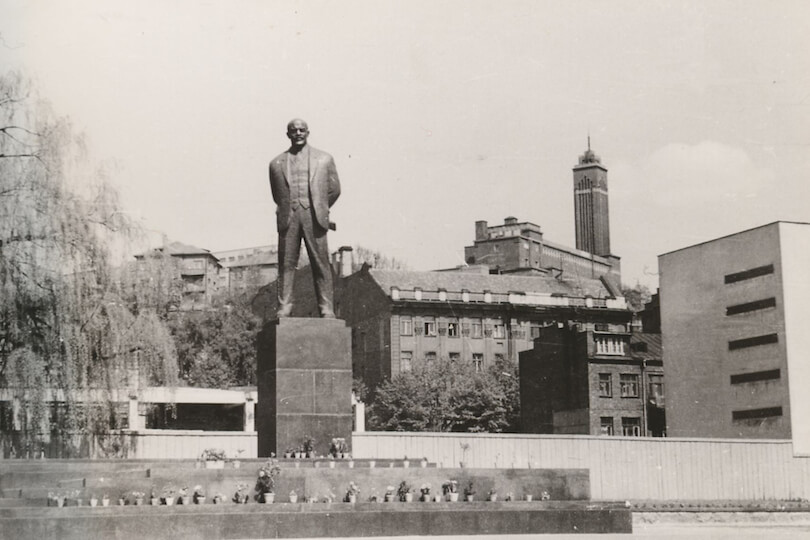
Kaunas retained the memory of the Provisional Capital and opposed the russification pursued by the Soviet system. Having lost the focus of the humanitarian culture, the university, Kaunas was being formed as a technocratic city. Never ceased hope of freedom (the events of All Soul’s Day in 1956, the Sacrifice of Romas Kalanta in 1972) brought the people of Kaunas to “Sąjūdis”.
See moreIf you find any inaccuracies or if you would like to submit additions, please send us your comments by filling out this form:
-
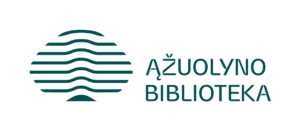 Kaunas County Public Library
Kaunas County Public Library
-
 Žymūs Kauno žmonės: atminimo įamžinimas
Žymūs Kauno žmonės: atminimo įamžinimas
-
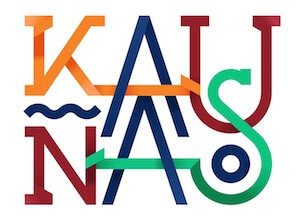 Kaunas IN
Kaunas IN
-
 European Heritage Label
European Heritage Label
-
 ModernistKaunas
ModernistKaunas
-
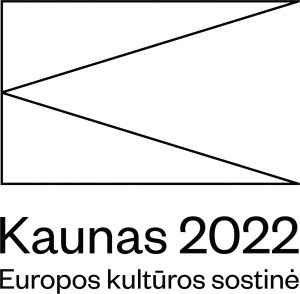 Kaunas 2022
Kaunas 2022
-
 Kaunas Full of Culture
Kaunas Full of Culture
-
 Open Archives of Kaunas
Open Archives of Kaunas
-
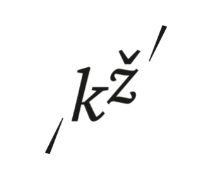 Kauno žodynas
Kauno žodynas
-
 eLibrary
eLibrary
-
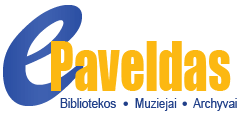 Virtual Culture Heritage System
Virtual Culture Heritage System
-
 Europeana
Europeana
-
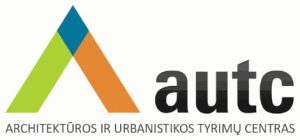 Architecture and Urbanism Research Centre (AUTC)
Architecture and Urbanism Research Centre (AUTC)
-
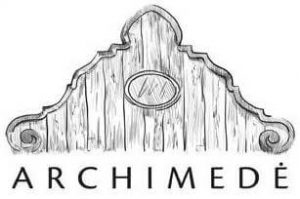 ARCHIMEDĖ
ARCHIMEDĖ

